Prhljaj je pogosto stanje, ki povzroči, da se koža na lasišču lušči. Ni nalezljivo ali resno, lahko pa je neprijetno in zelo pogosto ga je težko zdraviti. Blagi prhljaj lahko odpravite z nežnim vsakodnevnim šamponiranjem. Če to ni učinkovita metoda, lahko pomaga šampon z zdravilnimi učinkovinami. Prhljaj in izpadanje las sta lahko povezana, prav tako izpadanje las ter napad uši...
PRHLJAJ: Simptomi prhljaja | Posvet z zdravnikom | Vzroki prhljaja | Zdravljenje | Seboreični dermatitis | Konvencionalno zdravljenje | Alternativno zdravljenje | Zdravljenje doma | Vprašanja in odgovori | Viri/reference
UŠI: Simptomi | Posvet z zdravnikom | Vzroki | Zdravljenje | Konvencionalno zdravljenje | Alternativno zdravljenje | Preprečevanje | Vprašanja in odgovori | Viri/reference
KOMBINACIJE: Prhljaj in izpadanje las | Izpadanje las in uši
PRHLJAJ
Za prhljaj - tiste suhe, bele luske kože, ki jih morate nenehno krtačiti s svojega ovratnika in ramen - je značilno, da zdravja prav nič ne ogroža. Lahko pa je vir zadrege in srbenja, ki ga spremlja, lahko postane prava nadloga. Mnogi ljudje nepravilno menijo, da je ta težava povezana s higieno ali s tem, kako pogosto si umivate lase. Čeprav je sicer res, da lahko bolj poredko šamponiranje las poslabša že prisoten prhljaj, ga pa ne more povzročiti.
Slika: videz prhljaja na glavi
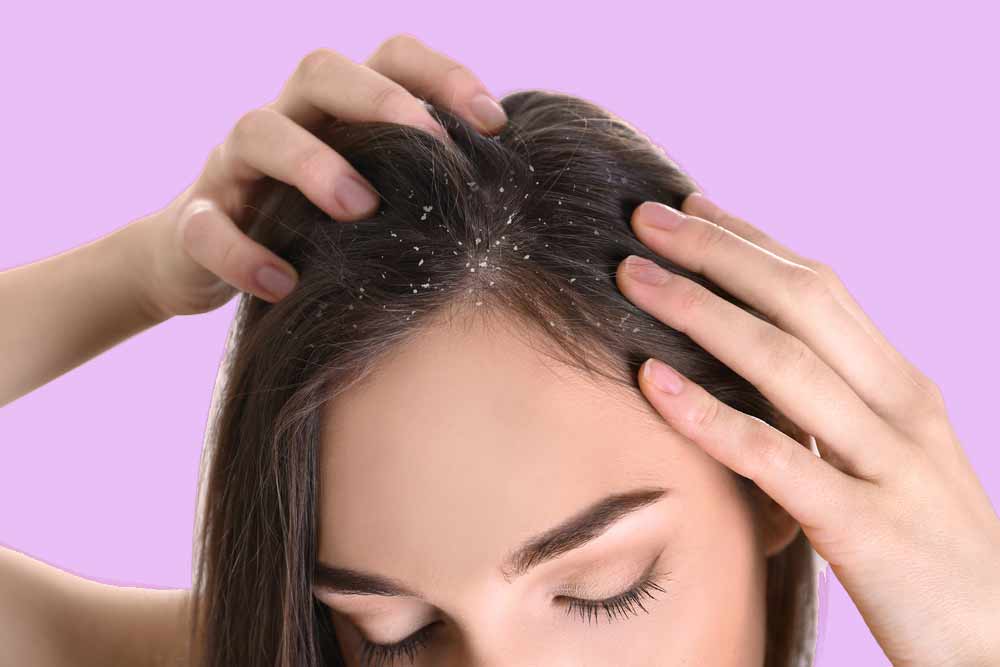
Kar je pravzaprav vzrok prhljaja, je preprosta razlika med ljudmi, ki se ločijo po naravnem procesu, ki se nam dogaja vsak dan: odmiranju kožnih celic. Nekaterim med nami pač odmirajo bolj kot drugim.
SIMPTOMI
- Luske kože, vse od majhnih in belih pa do velikih, mastnih in rumenih.
- Srbeče luščenje kože, ki se pojavlja na lasišču ali na obrveh ali okoli roba lasišča, okoli ušes ali okoli nosu.
POSVETUJTE SE Z ZDRAVNIKOM, ČE
- je luščenje mastno in rumeno ter po uporabi šampona proti prhljaju, ki ga dobite brez recepta, ne poneha; morda imate seboroični dermatitis in potrebujete bolj korenito zdravljenje, da ublažite srbenje in luščenje.
- je prhljaj omejen le na nekaj majhnih mest in zelo srbi; morda imate glivično okužbo, ki jo je treba zdraviti z zdravili na recept.
VZROKI ZA NASTANEK PRHLJAJA
Vzrok prhljaja so kožne celice, ki prehitro rastejo in prehitro odmirajo. Kaj vodi v ta prehiter proces, pa zdravniki ne vedo. Nekateri ljudje s hudim luščenjem imajo preveč dejavne žleze lojnice (katerih naloga je, da naoljijo kožo), spet drugi imajo zvečano raven glive Pityrosporum ovale, ki je sicer prisotna pri vseh ljudeh, vendar jo imajo ljudje s prhljajem občutno več. Drugi dejavniki so lahko družinska anamneza, alergija na hrano, pretirano znojenje, uporaba alkalnih mil, glivične okužbe in stres. K prhljaju lahko svoje prispeva celo letni čas. Hladne in suhe zime pomembno prispevajo k nastanku prhljaja pa tudi poslabšajo že obstoječe stanje.
Video vsebina: kaj povzroča nastajanje neprijetnega prhljaja?

Če so luske prhljaja mastne in rumene, je najverjetnejši vzrok kožna motnja, ki jo imenujemo seboroični dermatitis. Suhe in debele spremembe kože sestojijo iz velikih srebrnkastih lusk, ki jih zasledimo tudi pri manj pogosti psoriazi lasišča. Te oblike prhljaja, kot tudi mnoge povprečne različice, lahko postanejo nevarne le, če se tako močno praskate, da poškodujete kožo. V tem primeru ste bolj ogroženi za nastanek okužb, zlasti zaradi stafilokoknih in streptokoknih bakterij.
ZDRAVLJENJE
S številnimi šamponi, ki jih je mogoče dobiti brez recepta, lahko dobro nadziramo zmerne oblike prhljaja. V primerih bolj trdovratne oblike, kakršna je seboroični dermatitis, pa se posvetujte z zdravnikom. Nekatera zdravilna zelišča lahko ublažijo srbečico in suhost kože, vendar boste za obvladanje mastnih lusk ponavadi morali uporabiti proizvode na osnovi katrana.
Uprava za hrano in zdravila v ZDA je odobrila le pet aktivnih sestavin kot varne in učinkovite za zdravljenje prhljaja:
- premogov katran,
- pirition cink,
- salicilno kislino,
- selenov sulfid in
- žveplo (za učinkovit pripravek priznava tudi kombinacijo salicilne kisline in žvepla).
Video vsebina: kako pozdraviti prhljaj doma?

Vsem ostalim snovem v šamponih proti prhljaju so odrekli lastnost aktivnih sestavin, zato vedno skrbno preberite navodila.
SEBOROIČNI DERMATITIS NA LASIŠČU
Seboroični dermatitis je kronična, recidivna in običajno blaga oblika dermatitisa, ki se lahko pojavi pri dojenčkih kot pri odraslih.
Resnost se lahko razlikuje od minimalne, asimptomatske luskavosti lasišča (prhljaj) do širše vpletenosti. Prhljaj spada med pogoste dermatološke težave lasišča pri adolescentih in kasneje odraslih. Značilen je nastanek drobno belih ali belo-rumenih kožnih lusk na lasišču, ki so lahko suhe ali mastne in njihovo luščenje. Lahko je prisotna tudi srbečica Lasišča. Moški so pogosteje prizadeti kot ženske.
Razlog za nastanek prhljaja, kljub razširjenosti še ni natančno poznan. Ena ključnih povezav z nastankom prhljaja naj bi bila povečana aktivnost lojnih žlez, pri kateri imajo glavno vlogo hormoni in različne hormonske spremembe. Povečano pojavnost se povezuje tudi z moškim dedno zasnovo, čustveno nezdravo uživanjem različnimi zunanjimi dejavniki, utrujenostjo, debelostjo, motnjami imunskega sistema (npr. HIV), neustrezno nego lasišča, z določenimi spolom, fizično in obremenitvijo, prehrano alkohola, in z nevrološkimi stanji (npr. Parkinsonova bolezen), redkim krtačenjem ali česanjem las, z mastnimi lasmi, s suho kožo.
Video vsebina: seboreični dermatitis, vse kar ste želeli vedeti o njem.

Povečana aktivnost lojnih žlez naj bi z ustvarjanjem ugodnega okolja za rast gliv kvasovk iz rodu Malassezia, katerih naj ne bi bila ključna prisotnost ampak dovzetnost se njihova posameznika na njihov vpliv. Ker glivica začne prekomerno množiti, se posledično zaradi draženja lasišča hitreje začnejo tvoriti nove kožne celice v zaščitni pregradi plasti kože, ki poroženijo, odmrejo ter odpadejo, kar se izrazi kot prhljaj.
Prhljaj zdravimo s šamponi, ki se uporabljajo v samozdravljenju. Razen, kadar izdelki proti prhljaju kljub ustrezni uporabi ne pomagajo ali lasišče postane občutljivo, pordelo in otečeno, se priporoča obisk dermatologa, ki predpiše ustrezno zdravljenje.
Ker je prhljaj kronična oblika dermatitisa, ga ne moremo pozdraviti. Lahko pa preprečimo in zmanjšamo možnost vpliva različnih dejavnikov na poslabšanje (ustrezna prehrana s čim manj nasičenimi in trans-maščobami, uživanje probiotikov, zadostnih količin vitaminov B, cinka, selena in omega-3 maščobnih kislin, izogibanje stresu, redna telesna aktivnost,...) ter skrbimo za ustrezno nego lasišča. Priporoča se zdravljenje s šamponi, ki vsebujejo antimikotik (2 % ketokonazol, ciklopiroks, cinkov pirition, selenov sulfid), ki dokazano delujejo na glivice in keratolitik (kot sta salicilna kislina, žveplo), ki pospešujejo luščenje kože.
Slika: prikaz seboreičnega dermatitisa na lasišču
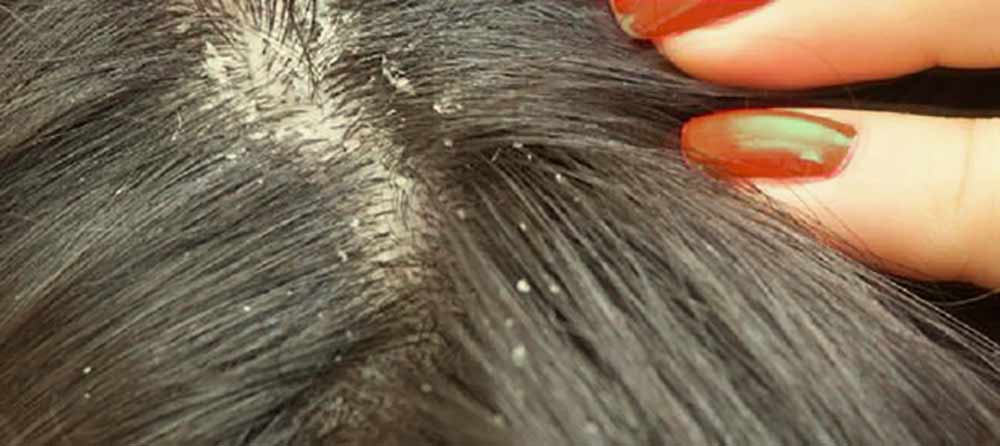
Zdravilne šampone je potrebno uporabiti po navodilu proizvajalca, dokler le-ta ne izgine. Če je prhljaj prisoten tudi v bradi ali obrveh, se lahko uporabi tudi na teh mestih. Po tem se zdravljenje prekine za 1-3 mesece. V tem času se svetuje uporaba nežnih pH nevtralnih šamponov. V primeru ponovitve prhljaja zdravljenje z zdravilnim šamponom ponovimo.
K manjšemu pojavu prhljaja vpliva tudi večje izpostavljanje UV žarkom, ki zaustavijo rast glivic. Zato imajo v večini ljudje v poletnem času manj težav s pojavnostjo prhljaja
(mag Grohar Maležič mag. farm.)
KONVENCIONALNA MEDICINA
Če kljub temu, da ste že uporabili preparate, ki se dobijo brez recepta, ugotovite, da se še vedno praskate in da vam prhljaj ves čas odpada, pojdite k svojem zdravniku. Morda uporabljate napačen šampon za svoje stanje. Za zelo odporne primere prhljaja boste morda morali uporabiti steroidni losjon, ki ga je mogoče dobiti le na recept.
Večina zdravnikov vsem, ki trpijo zaradi prhljaja, priporoča dnevno uporabo medicinskega šampona in svetuje, da pustijo peno na lasišču vsaj 10 minut. Milo in šampon, ki ju niste dovolj skrbno sprali, še poslabšata kožne težave. Ko se prhljaj umiri, uporabljajte medicinski šampon le enkrat ali dvakrat tedensko, ker je za vsakodnevno uporabo premočan. Če je le mogoče, pustite, da se lasje sami posušijo, in ne uporabljajte sušilnika za lase.
Morda vam bo koristilo, če si krtačite lase s krtačo iz naravnih ščetin. Krtačite se iz lasišča navzven. Tako boste olje z lasišča, kjer lahko povzroča prhljaj, odstranili vzdolž lasnih pramenov, ki olje potrebujejo, da ostanejo bleščeči in zdravi.
ALTERNATIVNI NAČINI
Poleg zeliščnih pripravkov so za zdravljenje prhljaja lahko učinkovite tudi druge alternativne izbire - vključno s skrbno prehrano, z vajami duha in telesa za zmanjševanje stresa in masažo.
ZELIŠČA
Za preprečevanje nastajanja lusk in za zaščito pred okužbo poskusite lasišče masirati s čajevcevim oljem (Melaleuca spp). Nekateri praktiki zagovarjajo stališče, da je to olje prav tako učinkovito kot steroidne kreme, predpisane na recept.
Video vsebina: Kako se hitro znebiti prihljaja?

Posušeni timijan (Thymus vulgaris), rožmarin (Rosmarinus officinalis) ali žajbelj (Salvia otticinalis) so lahko zelo učinkoviti za spiranje las. Zavrite 2 zvrhani jušni žlici enega od teh zelišč v skodelici vode in pustite vreti 10 minut. Precedite in ohladite. Tekočino zlijte na mokre in čiste lase in jo vmasirajte v lasišče. Ne spirajte.
MEDICINA DUHA IN TELESA
Stres lahko poslabša prhljaj. Redne telesne vaje niso dobre le za splošno zdravje, ampak so tudi eden najučinkovitejših načinov za omilitev stresa. Morda bi bilo pametno, če tedenskim vajam pridružite še katero izmed tehnik sproščanja, na primer jogo.
PREHRANA
Prhljaj je pogost simptom pri alergijah na hrano in je pogosto posledica zbirnega učinka različnih alergenov, zato je včasih težko najti izvor alergijske reakcije. Mleko na primer pijete vsak dan, pa ga vendarle ne povezujete z debelimi luskami na svojem lasišču.
Če standardna sredstva za odpravljanje prhljaja ne delujejo, poskusite iz prehrane izključiti mastne jedi (kot so orehi in čokolada), mlečne izdelke, čezmerne količine sladkorja in morske hrane. Dodatki vitaminov, kot so biotin, tiamin (vitamin B1), niacin (vitamin B3) in kobalamin (vitamin B12), lahko pomagajo odstraniti prhljaj, ker zvečajo sposobnost telesa, da razgrajuje maščobne kisline.
DOMAČA ZDRAVILA
- Krepko masiranje lasišča - med šamponiranjem ali med uporabo zeliščnih izdelkov, kot je čajevčevo olje - izboljša obtok v lasišču. Izboljšan krvni obtok koži pomaga, da se ne suši in poka.
- Pazite na svojo prehrano. Mlečni izdelki, mastna hrana, morski sadeži in prevelika uporaba sladkorja lahko poslabšajo prhljaj.
- Lasišče si umijte vsaj enkrat tedensko z medicinskim šamponom proti prhljaju.
IZPADANJE LAS
SIMPTOMI
- Pri moških: redčenje las na temenu, visoka čelna linija, podkvast lasni vzorec z golim temenom.
- Pri ženskah: redčenje las na splošno, predvsem na temenu; popolna plešavost je redka.
- Pri otrocih ali mlajših odraslih: nenadna izguba zaplat las; poznano kot alopecija areata.
- Popolna izguba dlak po vsem telesu; redka motnja, imenovana splošna alopecija.
- Posebno pri otrocih: zaplate zlomljenih las in nepopolna izguba las, včasih tudi obrvi; otrok si najverjetneje drgne ali puli lase; motnja se imenuje trihotilomanija.
- Čezmerno izpadanje las, vendar ne popolna plešavost, povezano z različnimi boleznimi ali jemanjem zdravil, hitro izgubo telesne teže, anemijo, stresom ali nosečnostjo; stanje je znano kot telogeni efluvij.
POSVETUJTE SE Z ZDRAVNIKOM, ČE:
- sumite, da imate vi ali vaš otrok alopecijo areato ali da ima otrok trihotilomanijo; obe stanji naj oceni zdravnik.
- nerazložljivo izgubite lase ali dlake kjerkoli na telesu; zdravnik bo mogoče iskal bolezen, ki to povzroča.
Človeški lasje se med seboj močno razlikujejo po barvi in trdnosti, ljudje smo različno poraščeni po glavi in telesu, odvisno od spola, starosti, rase in dednih zasnov. Kljub mnogim razlikam med lasmi je normalno za vse, da smo poraščeni po temenu in zatilju. Kadar lasje začnejo izginjati tam, gre za alopecijo ali plešavost.
Ljudje smo poraščeni po vsem telesu, razen po dlaneh in podplatih, vendar je mnogo dlak tako tankih, da jih komaj vidimo. Lasje in dlake so iz beljakovine, imenovane keratin, ki jo tvorijo lasni mešički v zunanji plasti kože. Ko mešički tvorijo nove lasne celice, izrivajo stare skozi površino kože s hitrostjo približno 15 cm na leto. Lasje in dlake, ki jih vidimo, so pravzaprav niz mrtvih keratinskih celic.
Slika: prekomerno izpadanje las. Je čas za ukrepanje?
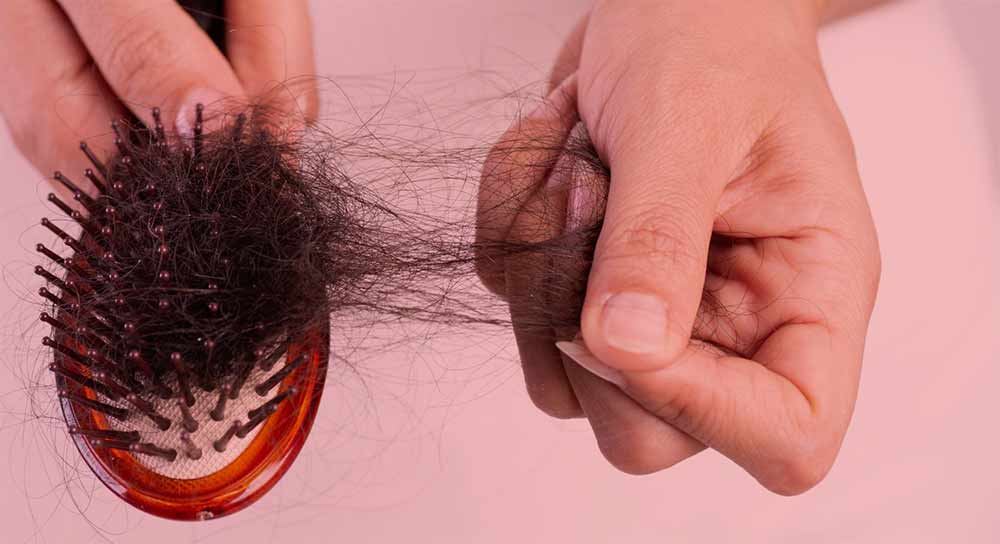
Na povprečni glavi odraslega je približno 100000 las, od katerih jih izpade do 100 na dan; tako da nekaj izpadlih las na krtači še ni razlog za preplah. Postopno redčenje las s starostjo je naravno in znano kot involucijska alopecija. Vse več lasnih mešičkov prehaja v telogeno fazo, tj. fazo mirovanja, preostali lasje pa so krajši in manj številni.
Androgena alopecija je dedno pogojeno stanje, ki doleti moške in ženske. Moški lahko začnejo izgubljati lase že v najstniških ali zgodnjih dvajsetih letih, medtem ko se pri večini žensk začnejo redčiti šele v štiridesetih ali še kasneje. Pri moških se postopno višanje čela in izginevanje las s temena imenuje plešavost po moškem vzorcu. Za plešavost po ženskem vzorcu je značilno splošno redčenje las po vsem lasišču, najbolj izrazito pa na temenu. Izgubo las v zaplatah pri otrocih in mladih odraslih, ki se ponavadi začne nenadoma, imenujemo alopecija areata. Konča se lahko s popolno plešavostjo, vendar v več kot 90% primerov lasje čez nekaj mesecev spet zrastejo. Pri splošni alopeciji izpadejo vse dlake po telesu. Le malo verjetno je, da bodo spet zrasle, še posebej, če se to pojavi pri otrocih.
Motnjo, ko si bolnik puli lase, imenujemo trihotilomanija; najpogosteje jo vidimo pri otrocih.
VZROKI
Zdravniki ne vedo, zakaj imajo nekateri lasni mešički krajšo rastno dobo kot ostali, (čeprav mislijo, da je eden od dejavnikov koncentracija androgenov (moških spolnih hormonov, ki normalno nastajajo pri moških in pri ženskah) v krvi, nima izpadanje las nobene povezave z moškostjo.
Video vsebina: 8 razlogov zakaj izgubljate lase

Začasna izguba las se lahko pojavi v povezavi z visoko vročino, hudo boleznijo, motnjami delovanja ščitnice, pomanjkanjem železa, splošno anestezijo, zdravljenjem z zdravili, hormonskimi motnjami ali izrednim stresom ter pri ženskah po porodu. Pri teh stanjih, ki jih poznamo po skupnem imenu telogeni efluvij, veliko lasnih mešičkov preide v fazo mirovanja, kar povzroči izrazito zredčenje las. Zdravila, ki lahko povzročijo začasno izpadanje las, so mdr. kemoterapevtiki za zdravljenje raka, antikoagulanti, retinoidi za zdravljenje aken in kožnih bolezni, zaviralci beta za zdravljenje zvišanega krvnega tlaka in kontracepcijske tablete.
Izpadanje las lahko povzročajo tudi opekline in poškodbe lasišča, obsevanje lasišča z rentgenskimi žarki ter izpostavljenost lasišča nekaterim kemikalijam, snovem za čiščenje bazenov, sredstvom za beljenje, barvanje in trajno kodranje las. V teh primerih začnejo lasje spet normalno rasti, ko odstranimo vzrok.
Vzroki alopecije areate, motnje, ki ponavadi doleti otroke ali najstnike, še niso pojasnjeni. Večinoma lasje spet zrastejo, vendar so lahko najprej zelo tanki in svetli, preden se jim povrneta običajna debelina in barva.
Prepogosto umivanje, trajno kodranje, beljenje in barvanje las ne povzročajo plešavosti, lahko pa prispevajo k redčenju las, ker ti postanejo šibki in lomljivi. Tesno spletanje in navijanje lahko poškodujeta in zlomita lase, sponke za lase pa poškodujejo lasne mešičke. V večini primerov lasje spet normalno zrastejo, če odstranimo vzrok njihove poškodbe. Hude poškodbe las ali lasišča včasih zapustijo trajna področja plešavosti.
Kaj lahko povzroči prhljaj in izpadanje las?
Vsako stanje, ki povzroči luščenje kože ali povzroča neobičajno hitro luščenje zunanje plasti kože, lahko povzroči prhljaj.
Video vsebina: Ali lahko prhljaj povzroči izpadanje las?

Vzroki, ki lahko povzročijo prhljaj in izpadanje las ob enem
Glivične okužbe: Tinea capitis ali lišaji lahko povzročijo močno srbenje na lasišču. Nekateri ljudje opazijo tudi suhe luske ali mehurje, lasje pa lahko izpadajo v velikih zaplatah.
Nekatere druge glivične okužbe lahko povzročijo simptome prhljaja in prav tako povzročijo izpadanje las. Protiglivična zdravila lahko pomagajo pri zdravljenju teh stanj.
Luskavica lasišča: Luskavica je vrsta avtoimunskega stanja, ki lahko prizadene lasišče in povzroči nastanek srbečih, luskastih madežev. Čeprav ne gre za prhljaj, luskavica povzroča prhljaju podobne simptome. Oseba lahko opazi plešaste lise, na mestu kjer se razvijejo luskaste lise.
Video vsebina: psoriaza lasišča in še več z dr. Mike-om.

Folikulitis decalvans: To redko vnetno stanje uniči lasne mešičke. Povzroča tudi nastanek srbečih rdečih madežev na lasišču. Oseba lahko misli, da ima prhljaj zaradi srbenja, ki ga to stanje povzroča.
Lichen planopilaris: Pogostejši pri ženskah je lichen planopilaris, ki povzroči nastanek suhega, luskastega izpuščaja na lasišču. Lahko povzroči celo, da lasje izpadajo v večjih zaplatah. Zdravljenje prhljaja ne bo odpravilo tega stanja (napačno zdravljenje), vendar pa so simptomi podobni tistim pri prhljaju.
Seboroični dermatitis: Seboroični dermatitis lahko prizadene kateri koli del telesa. Običajno prizadene lasišče, kjer lahko povzroči rdeč ali sivkast luskast izpuščaj, ki izrazito srbi, pa tudi mastne lise. Če se seboreični dermatitis ne zdravi, lahko poškoduje lasne mešičke. Agresivno praskanje območja lahko signifikantno poslabša stanje.
Vsako stanje, ki povzroči srbenje ali pekoč občutek lasišča, lahko povzroči izpadanje las, ko se oseba praska po lasišču. Zlasti otroci se lahko na neprijetno srbečico lasišča odzovejo s puljenjem las.
Drugi vzroki
Pri ljudeh s prhljajem in izpadanjem las ni nobenega zagotovila, da sta ti dve stanji med sabo povezani. Nekateri ljudje imajo lahko prhljaj, morda zaradi suhe kože, pa tudi zaradi stanja, ki povzroča izpadanje las, kot so:
- moška plešavost, hormonska vrsta izpadanja las, ki se lahko razvije tako pri moških kot pri ženskah
- telogeni efluvij, vrsta izpadanja las, ki jo povzroči okužba, poškodba ali stres
- alopecia areata, avtoimunsko stanje
- vnetje ali brazgotinjenje lasišča
- okužbe lasišča
TRIJE TIPI PLEŠAVOSTI
Slika: prikaz začetka plešavosti pri moških in pri ženskah

Plešavost po ženskem tipu doleti le malo žensk in ponavadi šele po menopavzi. Lasje se redčijo na čelu, senceh ter na temenu (3. slika) in končno lahko teme postane skoraj popolnoma plešasto (4. slika).
Slika: izpadanje las v povezavi z Alopecijo Areato
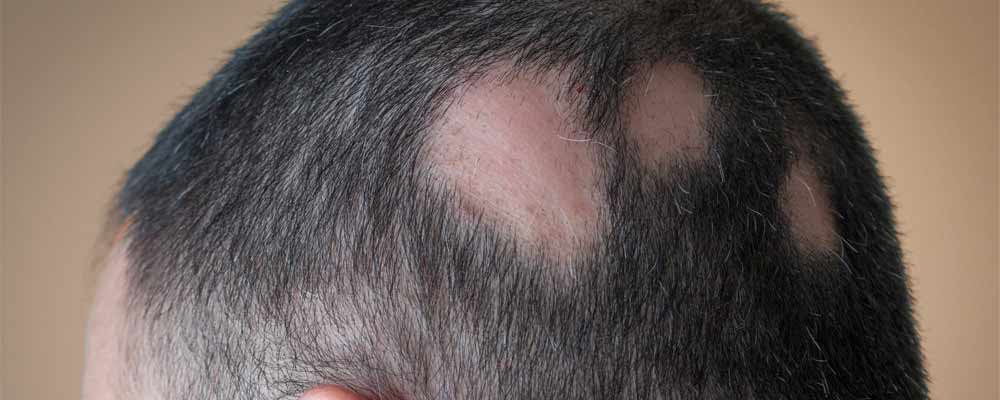
Alopecija areata je nenadna popolna izguba las na omejenih področjih pri otrocih ali odraslih obeh spolov. Vzrok ni poznan. Plešasta mesta se lahko pojavijo na lasišču, obrveh in v bradi ter so lahko obširna. V večini primerov lasje ponovno zrastejo brez zdravljenja.
ZDRAVLJENJE
Zdravila, ki obljubljajo ponovno rast las na plešastih glavah, so znana že iz davnih časov. Vendar lahko v resnici moški in ženske naredijo le malo proti redčenju las. Zaradi kozmetičnih vzrokov ali po izgubi las zaradi kirurškega zdravljenja ali zdravljenja z zdravili mnogi ljudje uporabljajo lasulje ali lasne vložke in se celo tetovirajo, da prikrijejo izgubljene obrvi in trepalnice.
Video vsebina: kako preprečite tanjšanje in izpadanje las

KONVENCIONALNA MEDICINA
V določenih okoliščinah lahko pripravki, ki vsebujejo zdravilo minoksidil, zmerno spodbudijo rast las na plešastih delih lasišča. Učinki so najbolj obetajoči pri mlajših ljudeh, pri katerih so se znaki plešavosti šele začeli kazati oziroma imajo majhna področja plešavosti. Zdravilo nanašate na plešasta področja dvakrat na dan vsak dan; če z nanašanjem prekinete, se plešavost spet pojavi. Več kot 50% uporabnikov trdi, da zdravilo zgosti lase in upočasni izpadanje. Ni pa uspešno pri moških, ki so že obsežno plešasti po moškem vzorcu. Stranski učinki so minimalni, pri nekaterih se lahko zdraži koža. Poročajo, da jemanje minoksidila pri manjšem številu bolnikov vpliva na srčno frekvenco, zato naj bolniki z boleznimi srca in ožilja uporabljajo le pripravke za zunanjo uporabo.
Video vsebina: kako preprečiti moško plešavost?

Za določene vrste izpadanja las lahko predpišemo hormonsko zdravljenje, vendar ne brez tveganja. Čeprav se alopecija areata večinoma spontano pozdravi, poskušajo nekateri zdravniki izboljšanje pospešiti s kortikosteroidi, ki jih nanesejo na kožo ali vbrizgajo v lasišče. Tako zdravljenje je boleče in lahko v lasišču pusti brazgotine zaradi atrofije kože. Uživanje kortizola spodbuja rast novih las, vendar je učinek ponavadi le začasen. Prednizon, še en steroid v obliki tablet, se je izkazal kot učinkovit za bolnike z alopecijo areato, vendar je možnih mnogo stranskih učinkov: povečanje telesne teže, presnovne motnje, akne in menstruacijske težave. Hormonsko zdravljenje s kontracepcijskimi tabletami izboljša plešavost zaradi hormonskih motenj pri mladih ženskah.
Presajanje las pomeni prenašanje presadkov kože z delov lasišča, ki vsebujejo aktivne lasne mešičke, na plešasta področja. Včasih je treba bolniku presaditi več sto presadkov - 10-60 med enim posegom. Presajeni lasje lahko izpa-
UPORABITE GLAVO, OHRANITE LASE
Trditve, da nekateri regeneratorji prehranjujejo in revitalizirajo lase, ne držijo. Lasje - tudi najbolj močni in košati - so mrtev keratin. Regeneratorji vsebujejo voske, ki lasem dajo gladkost, ne morejo pa spremeniti njihovega dejanskega zdravja. Torej: od šampona pričakujte čiste lase in lasišče in nič drugega. Redno krtačenje bo dolgoročno zdravju las bolj koristilo, vam pa bo prihranilo denar za drage šampone, regeneratorje, barve in druge vprašljive pripravke za lase.
Redukcija lasišča je vrsta kozmetične operacije, pri kateri lasišče zmanjšajo tako, da poraščeno kožo z zadnjih in stranskih delov glave potegnejo proti temenu. Tako kot presajanje las je tudi ta postopek boleč in drag, poleg tega pa nič ne upočasni dedno pogojenega ali starostnega izpadanja las.
ALTERNATIVNI NAČINI
KITAJSKA MEDICINA
ZELIŠČA
Pri začasni ali delni izgubi las zaradi sistemske bolezni, zdravil ali drugega znanega vzroka zeliščarji za spodbujanje rasti novih las priporočajo stimulacijo lasnih mešičkov in izboljšanje prekrvitve lasišča.
Slika: rastline, ki lahko pomagajo in preprečijo prekomerno izpadanje las.
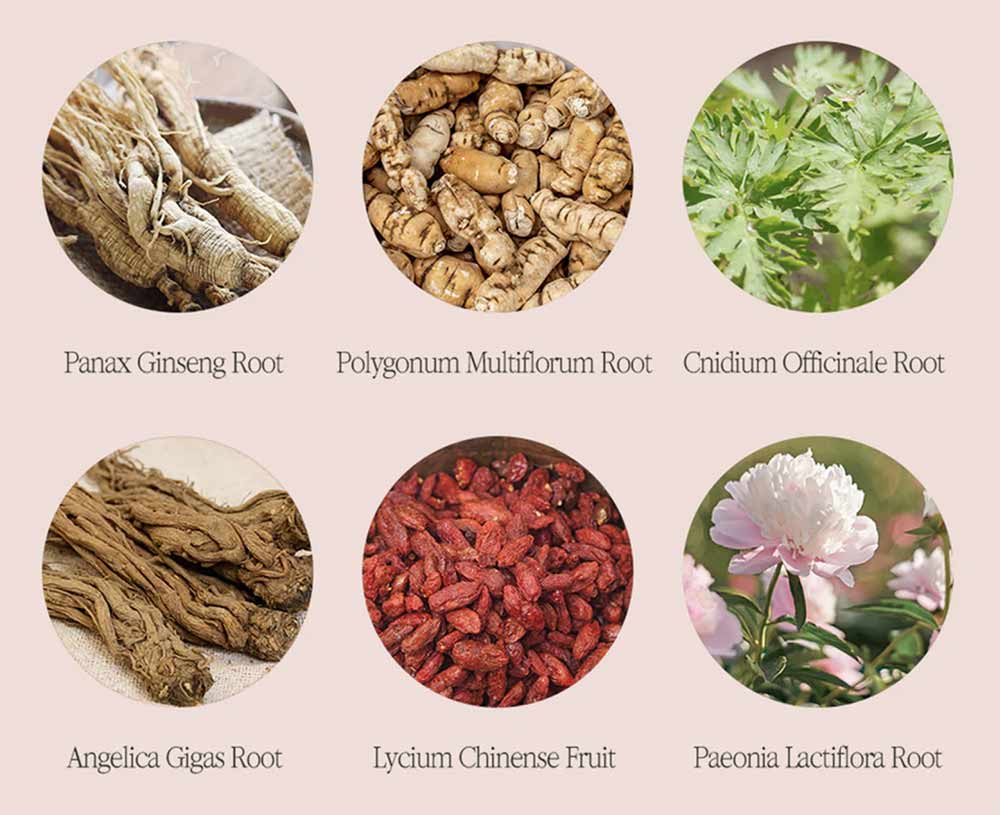
HOMEOPATIJA
MASAŽA
MEDICINA DUHA IN TELESA
PREHRANA
PREPREČEVANJE
Čeprav naravne plešavosti ne morete zaustaviti, lahko lase zaščitite pred poškodbami, ki bi lahko privedle do njihovega redčenja. Nekateri ljudje, posebej ženske, v prizadevanju za lepoto lase izpostavljajo škodljivim vplivom. Sušilniki za lase, vroči navijalci las, barve, belila, kemično ravnanje las, trajno kodranje las in kozmetična sredstva, polna kemikalij, lahko povzročijo, da postanejo lasje suhi, lomljivi in redki. Ljudje, ki ohranjajo naravno barvo in obliko svojih las, imajo lase bolj zdrave. Uporabljajte blage šampone, primerne svojim lasem. Če morate kodrati lase, uporabljajte navadne navijalke in lase sušite na zraku, kadarkoli je to mogoče.
Video vsebina: ali obstaja način, ki bi preprečil prekomerno izpadanje las?

Redno krtačenje je za stanje las vsaj toliko koristno kot katerikoli kozmetični pripravek. Izberite zmerno trdo krtačo iz naravnih ščetin, ki las ne bo trgala. Delajte dolge potege od lasišča do konca las. Tako enakomerno razporedite njihovo naravno maščobo. Začnite z 10 do 20 potegi na dan in poskušajte stopnjevati do 100. Bodite nežni in se izogibajte krtačenju mokrih las, ki so še posebej lomljivi. Ne pozabite: lasje niso živo tkivo, torej se ne morejo sami popraviti.
UŠI
SIMPTOMI UŠI
- Naglavne uši: hudo srbenje po lasišču, posebej za ušesi in v zatilju.
- Bele (oblačilne) uši: nepojasnjene praske po telesu, koprivnica, ekcem in rdeči mozolji na ramenih in po trupu.
- Sramne uši: stalno srbenje v predelu sramnih dlak, lahko tudi izpuščaj.
POSVETUJTE SE Z ZDRAVNIKOM, ČE:
- potrebujete pomoč pri odstranjevanju uši ali
- je zaradi praskanja prišlo do okužbe.
Uši so majhni zajedavci, ki živijo na človeškem telesu in se hranijo s krvjo.
Video vsebina: kako uši povzročijo nastajanje nepregledne džungle med lasmi?

Naglavne uši (Podiculus humanus capitis) so velike za sezamovo zrno in jih lahko vidite, čeprav se na svetlobi hitro skrijejo. Njihova jajčeca, imenovana gnide, so komaj vidne, belkaste pike, prilepljene na lase. Naglavne uši so izjemno nalezljive, posebej med šolskimi otroki. Naglavne uši dobi dvakrat več deklic kot dečkov, ne zaradi dolžine las, ampak zato, ker imajo deklice med sabo več telesnih stikov in si pogosteje izposojajo osebne stvari (klobuke, obleke, glavnike, slušalke), s katerimi se prenašajo uši.
Sramne uši (Rhthirius pubis) so rumeno-sive žuželke, ki jih najdemo na sramnih dlakah in se prenašajo s spolnimi stiki. Velike so za bucikino glavo, so delno prozorne in na svetli koži komaj vidne. Njihova jajčeca so komaj vidni, beli delci, tako močno prilepljeni na dlake, da jih z normalnim umivanjem ne odstranimo.
Bele (oblačilne) uši (Pediculus humanus corporis) izgledajo skoraj enako kot naglavne uši, vendar jih težje najdemo. Kadar se ne hranijo, se skrivajo v gubah obleke ali posteljnine. Znaki njihove prisotnosti so praske po telesu, koprivnica, ali majhni rdeči mozolji, ponavadi na ramenih, trupu ali zadnjici. Če uši ne odstranimo, lahko nastane izpuščaj.
VZROKI
ZDRAVLJENJE
KONVENCIONALNA MEDICINA
Najpogostejši postopek odstranjevanja naglavnih uši je, da odrasle uši pobijete z insekticidnim šamponom, gnide pa odstranite s posebnim gostim glavnikom. Najvarnejši in najučinkovitejši pripravek je losjon krotamitona, ki ga dobite brez recepta. Da dosežete najboljši učinek, natančno upoštevajte navodila. Zdraviti se morajo vsi družinski člani; okoli 60% otrok z ušmi ima sorodnike, ki jih prenašajo.
Zaradi preprečevanja širjenja uši naj otroci ne gredo v šolo, dokler uši ne odstranite. Vse obleke, posteljnino in brisače operite v vroči milnici in posušite z vročim zrakom. Posteljnino in druge stvari lahko tudi razkužite: zaprite jih v plastično vrečko za 14 dni - gnide se v enem tednu izležejo in umrejo od lakote. Glavnike, krtače in pokrivala razkužite tako, da jih za 10 minut namočite v vročo milnico.
Če neradi uporabljate insekticide, poskusite uši odstraniti le s česanjem. Lase umijte z navadnim šamponom in regeneratorjem in jih pustite mokre. Z gostim glavnikom počasi delajte potege vedno skozi le en pramen las stran od glave. Uši bodo ostale na glavniku ali bodo padle na tla.
Slika: glavnik za uši, redna higiena je ključna za zdravo in čisto lasišče
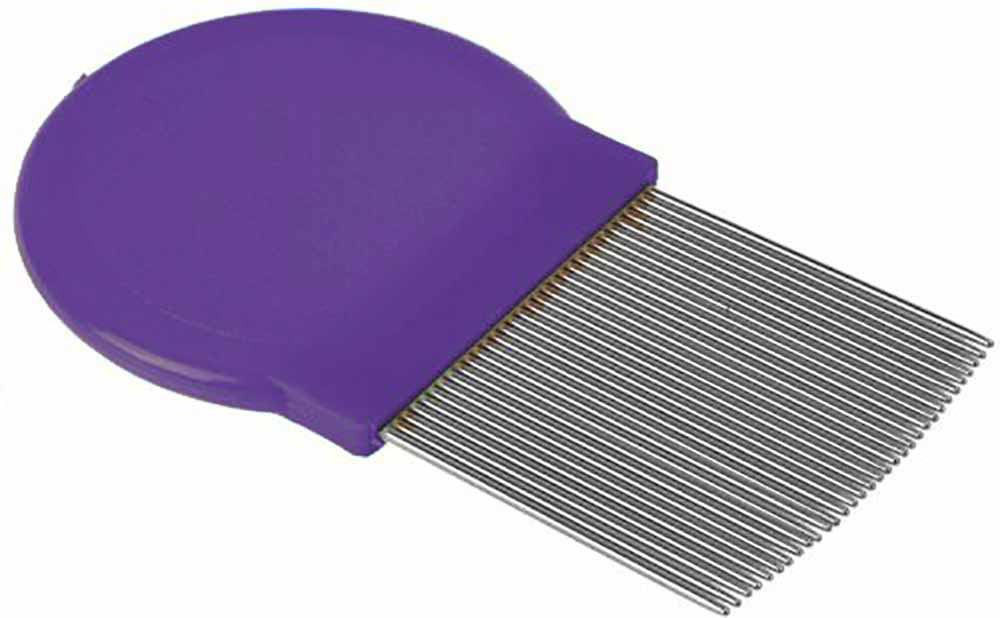
Po vsej glavi morate napraviti vsaj 30 potegov z glavnikom. Ponavljajte vsake tri dni. Ker mlade uši prvi teden še ne ležejo jajčec, boste v dveh tednih česanja odstranili vse uši.
Sramne uši lahko zdravite z zdravili v prosti prodaji, ki vsebujejo piretrine (naravne insekticide). Zdraviti se morajo tudi spolni partnerji. Sramne uši včasih najdemo na obrveh ali trepalnicah; odstranite jih z ustreznim očesnim mazilom.
Za zdravljenje belih uši celo telo umijte z vodo in milom. Če to ni učinkovito, uporabite insekticidno sredstvo, s katerim ponavadi ubijete vse uši. Vso obleko in posteljnino operite v vroči vodi in posušite z vročim zrakom. Obleke spravite za dva tedna v plastične vrečke ali jih razkužite s suho vročino 60 °C od tri do pet dni.
ALTERNATIVNI NAČINI
AROMATERAPIJA
HOMEOPATIJA
PREPREČEVANJE
Izpadanje las in uši
Številne bolezni lahko povzročijo izpadanje las. Med temi vzroki so dednost (družinska anamneza), slaba prehrana, neželeni učinki zdravil, določene bolezni ali obolenja, stres in nihanje hormonov ali hormonsko neravnovesje. Smiselno pa je preveriti, da prisotnost morebitnih uši ni vzrok ali dražljaj za izpadanje las na človeški glavi. Uši namreč odlagajo jajčeca, vendar niti ti paraziti niti njihova jajčeca ne bodo vplivali na število lasnih mešičkov, ki jih imate.
Video vsebina: Kako preprečiti izpadanje las v primeru razrasta uši

Glede na način življenja naglavnih uši in okolje, ki ga potrebujejo za preživetje, se zdi kontraproduktivno za njihov življenjski cikel, če povzročijo, da njihov človeški gostitelj izgubi lase. Naglavne uši ne morejo preživeti na plešasti glavi, saj potrebujejo zaščitno plast las na glavi, ki zagotavlja toploto. Poleg tega potrebujejo dlake, da jih zaščitijo pred odkritjem in nemoteno nadaljujejo z vsakodnevnimi dejavnostmi. Lasje so potrebni tudi za odlaganje jajčec. Če lasje odpadejo, uši ne bodo imeli več kam pritrditi svojih jajčec.
Ko imamo opravka z ušmi in redčenjem las, bi bilo smiselno sklepati, da so uši lahko vzrok za redčenje las, še posebej, če imate razdraženo lasišče. Vendar na splošno uši ne bodo neposredno povzročile izpadanja las, zato je potrebno vzrok najpogosteje iskati drugod. Možno pa je, da so naglavne uši vzrok stresa, ki je znan vzrok za izpadanje in redčenje las. Ko je primarni vir stresa odpravljen, bodo lasje najverjetneje zopet zrasli.
Vprašanja in odgovori
Ali lahko prhljaj povzroči izpadanje las?
Prhljaj sam po sebi ne povzroča izpadanja las. Vendar pa lahko zaradi hudega prhljaja oseba tako močno praska lasišče, da ga poškoduje. Ponavljajoče se vnetje v lasnih mešičkih lahko povzroči poškodbe in brazgotinjenje ter upočasni ali celo za nekaj časa ustavi rast las. To lahko povzroči nastanek šibkih las ali morebitno redčenje le-teh.[1]
Zakaj mi lasje izpadajo zaradi prhljaja?
Tinea capitis: tinea capitis, ki jo včasih zamenjujejo s prhljajem, je glivična okužba, ki lahko povzroči izpadanje las.
Telogen effluvium: Ta vrsta izpadanja las povzroči, da veliko foliklov hkrati vstopi v telogen, fazo mirovanja rasti las, med katero lasje ne rastejo.[2]
Kaj se zgodi, če prhljaja ne zdravimo?
Prhljaj se imenuje tudi "kozmetična bolezen". Zdravstveno stanje ni resno, ni nalezljivo in ne bo povzročilo drugih zdravstvenih težav. Če pa je ne zdravimo, lahko lasišče postane tako srbeče in vneto, da povzroči začasno izpadanje las. To je še en dober razlog za redno vendar ne prepogosto umivanje las s šamponom proti prhljaju.[3]
Ali lahko naglavne uši povzročijo izpadanje las, če stanja ne zdravimo?
Nezdravljene naglavne uši lahko poškodujejo lasišče in vplivajo na zdravje las in lasišča. Če se lasni folikli posledično zamašijo, lahko pride do izgube las. Težko je imeti negovane lase, če so ti prekriti z jajčeci uši, ušmi in bakterijami. Lase je posledično tudi zelo težko razčesati in jih primerno negovati.
Zdrave lase lahko ohranite le, če skrbite za svoje lase in svoje zdravje. Če pustite okužbo z ušmi nezdravljeno so lahko posledice sila neprijetne in so povezane z intenzivnejšim izpadanjem las, kar pa si večina ljudi ne želi.
Viri in reference
Vir: Družinski zdravstveni vodnik. Konvencionalno in alternativno zdravljenje
1. Is there a link between dandruff and hair loss? - https://www.medicalnewstoday.com/articles/326960
2. Can Dandruff Cause Hair Loss? - https://www.webmd.com/connect-to-care/hair-loss/can-dandruff-cause-hair-loss
3. Dandruff and Thinning Hair - https://www.webmd.com/skin-problems-and-treatments/features/thinning-hair


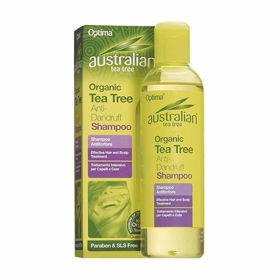
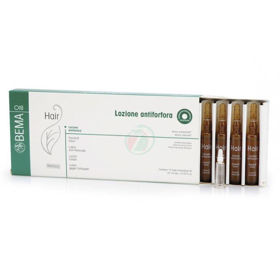

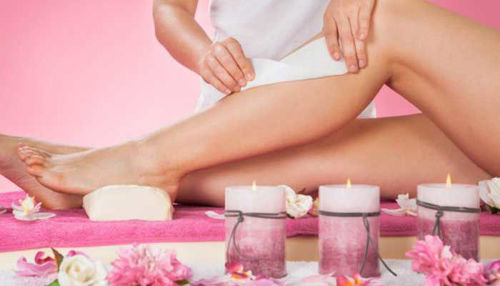
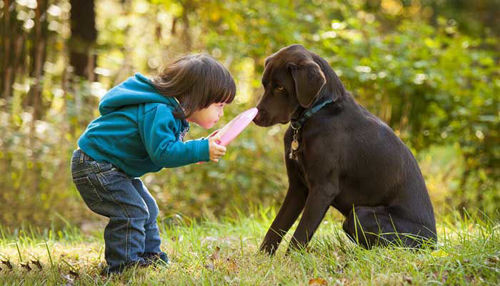

 Facebook
Facebook
 Instagram
Instagram
 info@moja-lekarna.com
info@moja-lekarna.com

